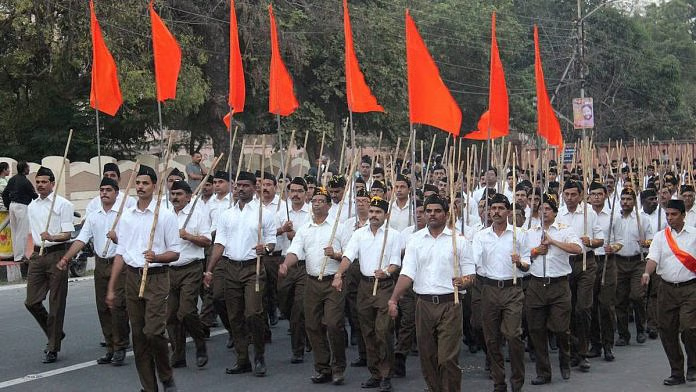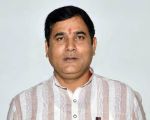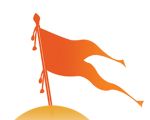Delhi :The Rashtriya Swayamsevak Sangh (RSS), founded in 1925 by Dr. Keshav Baliram Hedgewar, has been a cornerstone of India’s socio-cultural landscape, promoting the ideology of Hindutva and fostering national unity through its grassroots network. The RSS’s pracharaks—full-time volunteers dedicated to spreading its doctrine—have historically been the lifeblood of the organization, known for their accessibility and deep community engagement. Over the last eleven years (2014–2025), coinciding with the Bharatiya Janata Party’s (BJP) rise to power at the center, the RSS and its pracharaks have undergone significant transformations. This article examines these changes, exploring how the organization’s reach, operational strategies, and societal perceptions have evolved while maintaining a balanced perspective on its achievements and challenges.
Growth in Scale and Reach
The RSS has seen remarkable growth in its organizational footprint since 2014. In 2014, the RSS operated approximately 43,000 shakhas (daily gatherings) with 14 lakh swayamsevaks (volunteers) and 3,000 pracharaks. By 2019, the organization reported a doubling of its shakhas and membership, with around 50,000 daily shakhas and 10,000 IT-focused weekly meetings for urban professionals. This expansion reflects the RSS’s ability to adapt to modern lifestyles, particularly among youth and professionals, by introducing flexible formats like night shakhas and online engagement through campaigns like “Join RSS.” Between 2017 and 2021, over 1 lakh people annually expressed interest in joining the RSS, with 19,048 new members added in the first quarter of 2021 alone.
The pracharaks, traditionally known for their ascetic lifestyle and direct community interaction, have played a pivotal role in this expansion. Their accessibility—described as being available to anyone, anytime, for discussions of joys and sorrows—has been a hallmark of their community integration. However, the increased scale of operations has necessitated a shift. While pracharaks remain central, the organization has leveraged technology to amplify their reach. Digital platforms, such as the Vishwa Samvad Kendra for media outreach, have enabled pracharaks to engage with a broader audience, including the global Hindu diaspora. This digital pivot has been particularly effective in urban areas, where lifestyle changes have reduced attendance at traditional shakhas.
Adaptation to Modern Contexts
The last eleven years have seen the RSS adapt its methods to align with contemporary societal needs. The organization’s centenary in 2025 has been a focal point for introspection and strategic planning. The RSS announced plans to reorganize its 40-plus affiliate organizations to suit the digital age and evolving socio-economic contexts, a process that began in 2022 and is set to conclude by 2025. This restructuring includes modernizing the structure, scope, and responsibilities of affiliates like Seva Bharti, Vishwa Hindu Parishad, and Akhil Bharatiya Vidyarthi Parishad, ensuring relevance in a rapidly changing India.
For pracharaks, this modernization has meant embracing new tools and roles. While their traditional role involved direct, personal outreach, many now coordinate large-scale campaigns, such as the “Har gaon, Har basti-ghar-ghar” (every village, every locality, home-to-home) initiative planned for 2025–2026. These campaigns aim to distribute Sangh literature and foster unity through Hindu Sammelans, reflecting a blend of traditional grassroots engagement with structured, large-scale outreach. Additionally, pracharaks have been instrumental in relief efforts during natural calamities, such as the Uttarakhand floods, enhancing their image as community service providers.
The RSS’s uniform change from khaki shorts to full-length trousers in 2016 symbolizes this adaptation. The shift, driven by a desire to appeal to youth wary of the traditional attire, was a pragmatic move to maintain relevance without altering core ideological commitments. Pracharaks, as the public face of the RSS, have had to embody this balance between tradition and modernity, maintaining their ascetic ethos while navigating a more visible, scrutinized role in a digital age.
Relationship with the BJP and Political Influence
The RSS and BJP, while distinct entities, share a symbiotic relationship, with the RSS serving as the ideological mentor to the BJP. The BJP’s rise to power in 2014, under the leadership of former pracharak Narendra Modi, marked a turning point for the RSS. The organization’s influence on national policy became more pronounced, as seen in its role in mobilizing support for the BJP during the 2014 elections. High-profile interactions, such as Modi’s attendance at an RSS conclave in 2015, underscored this alignment, with the RSS shifting from a behind-the-scenes moral force to a more visible influencer.
For pracharaks, this political alignment has brought both opportunities and challenges. Their traditional role as apolitical community organizers has been complicated by perceptions of proximity to power. While the RSS maintains that pracharaks are forbidden from joining political parties, their involvement in coordinating with BJP leaders during events like the Akhil Bharatiya Samanvay Baithak has blurred these lines. This has led to increased media scrutiny and public debate about the RSS’s role in governance, with some viewing pracharaks as political operatives rather than cultural missionaries.
However, the RSS has navigated these perceptions carefully, emphasizing its focus on social cohesion and cultural revival. For instance, its support for a caste census in 2024, while cautioning against its use as a political tool, reflects a nuanced approach to engaging with contemporary issues without overtly aligning with partisan agendas. Pracharaks have been key in communicating this stance, maintaining their role as trusted community figures while addressing sensitive socio-political topics.
Challenges and Criticisms
The RSS’s growth and visibility have not been without challenges. Allegations of involvement in violent incidents, such as the 2003–2008 terror attacks linked to individuals associated with the RSS, have cast a shadow over its image. A 2022 affidavit by former pracharak Yashwant Shinde, claiming training for covert operations, further fueled controversy, though these claims remain contentious and lack conclusive evidence. The RSS has consistently denied such allegations, emphasizing its commitment to non-violence and social service.
Pracharaks, as the organization’s public face, often bear the brunt of these criticisms. Their increased visibility, especially in urban areas and on digital platforms, has made them targets for both admiration and critique. The shift from being “unknown” figures who organically gained popularity to being scrutinized public representatives has required pracharaks to adapt to a more polarized societal context. Lifestyle changes, particularly among urban youth, have also posed challenges, with fewer attending daily shakhas due to demanding schedules, prompting pracharaks to innovate with weekly or digital engagements.
Social Service and Global Outreach
One of the most significant transformations in the RSS’s work has been its emphasis on social service. Over the past decade, pracharaks have spearheaded initiatives under banners like Seva Bharti, running over two lakh service projects, including schools for underprivileged children and tribal communities. The RSS’s role in disaster relief, such as during the Orissa cyclone and Uttarakhand floods, has bolstered its reputation as a service-oriented organization. These efforts have allowed pracharaks to maintain their traditional role as community confidants while addressing modern societal needs.
Globally, the RSS’s influence has grown through affiliates like the Hindu Swayamsevak Sangh (HSS), particularly in the US, UK, and Australia. Pracharaks stationed abroad have adapted to diaspora contexts, organizing family-based shakhas and promoting Hindu culture through initiatives like Sewa International. The HSS’s training camps in the US, Trinidad, and Kenya reflect the RSS’s ambition to create a global cadre of pracharaks, extending their reach beyond India’s borders.
Balancing Tradition and Transformation
The last eleven years have been a period of significant evolution for the RSS and its pracharaks. From expanding their organizational reach to embracing digital tools, modernizing their image, and navigating a complex political landscape, pracharaks have remained central to the RSS’s mission of fostering a united Hindu society. While challenges like public scrutiny and allegations of political overreach persist, the RSS’s focus on social service and cultural revival has strengthened its societal impact. As the organization approaches its centenary in 2025, pracharaks will continue to play a pivotal role in balancing tradition with the demands of a modern, interconnected world, ensuring the RSS remains a dynamic force in India’s socio-cultural fabric.





